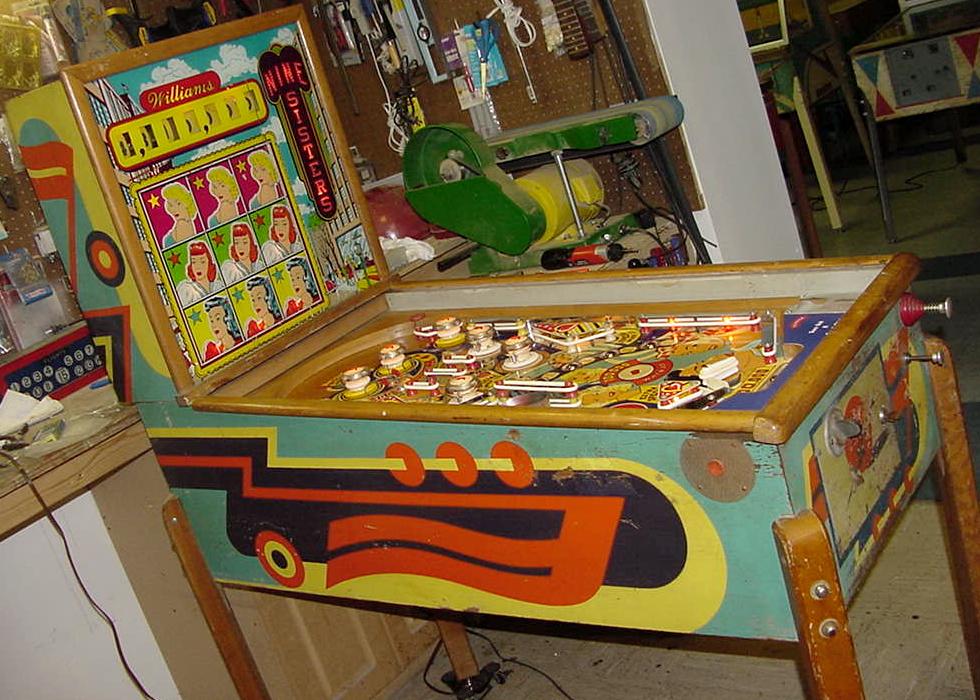
|
Description: Nine Sisters #97, 12/53, score reels scoring, single impulse flipper, left side spiral corkscrew ramp, four trap holes, two kickout holes (one upper, one lower), gold painted bumper caps and gold painted flipper. Nine Sisters was the last of the six pinball games Williams outfitted with score reels during 1953. The object is to light all nine sisters. There are nine star lights in the backblass, one for each sister. This lit star rotates by hitting one of the four top dead bumpers. If a sister has a star, and the player hits one of the "sister" playfield rollovers, that sister lights up in the backglass. If three sisters are made in a horizontal row, an accompanying playfield rollover lights for a replay (there are three "special" rollovers, one for each of the three rows of sisters). If all nine sister are lit, the lower rollover by the flipper also lights for "super special" (3 replays). In addition, if the player puts a ball in a traphole, one of the "NINE" letters is lit in the backglass. Getting all four trapholes (and spelling "NINE") gives a replay, and lights the top kickout hole for a replay. Replays are also awarded based on score. If ball is put into the lower left playfield area behind the left kickout hole, a kicker moves the ball up the left side of the playfield and up and around a corkscrew ramp (Williams calls it the "Whirligig"). Then the ball falls off the ramp's edge, and into another kicker. Now the ball is again kicked up the left side of the playfield and goes back to the top of the playfield in front of the top two gold dead bumpers. Overall Williams Nine Sisters is a pretty neat game. It's no Gottlieb, but it is the first use a metal ramp that I know of in a pinball game. Although the single flipper seems strange, it works well in this somewhat cramped playfield design. The impulse flipper is terrible - I converted my game to a standard flipper design with a Bally AF-25-500/28-1000 flipper coil and an EOS switch. The EOS switch is actually the flipper release switch, just reversed and re-wired (on the flipper relay, I just bent the contacts permanently closed). This made the play of the game much more controllable and fun, though historically it's obviously not original. I also added an additional bell for the 10,000 points, as there was no bell for this point range originally (just a 100,000 bell, and a "sister" bell). This required adding a set of contact to the 10,000 point relay. (I like lots of noise in my games.) Gottlieb *always* used a bell for every point value, so not having a bell for the 10k point range seemed strange to me on this Williams game. Another interesting restoration problem I had on the Williams 9 Sisters had to do with the three pop bumpers. The ring/rod assembly was very "wobbly" on the playfield. A lot of energy was lost in sideways movement of the ring/rod when it hit the ball, giving less then stellar ball kicks. The reason was simple - the holes drilled in the playfield were way too large (over 1/4") for the two 3/16" diameter rods (which connect to the ring, which is the metal part that moves downward, kicking the ball). I could SEE this problem when playing the game, where the downward moving ring would "wobble" sideways, decreasing the popping power of the pop bumpers. I fixed this by going to the hardware store and buying six 3/4" long, 1/2" outside diameter and 3/16" inside diameter nylon bushings. I then drilled the two playfield ring holes for each pop bumper to 15/32", and hammered the 1/2" wide bushings (two for each pop bumper) into the playfield. Though the pop bumper rods are 3/16" diameter, just like the new nylon bushings' inside diameter they now go through, I had to open up the holes to 7/32", otherwise the ring/rod assembly would bind. This modification made the pop bumper MUCH more powerful and "tight", like a Gottlieb pop bumper (the sideway "wobble" was now gone). If you have a Williams 9 Sisters pinball game for sale please contact me at cfh@provide.net
|

The author's Williams Nine Sisters pinball.

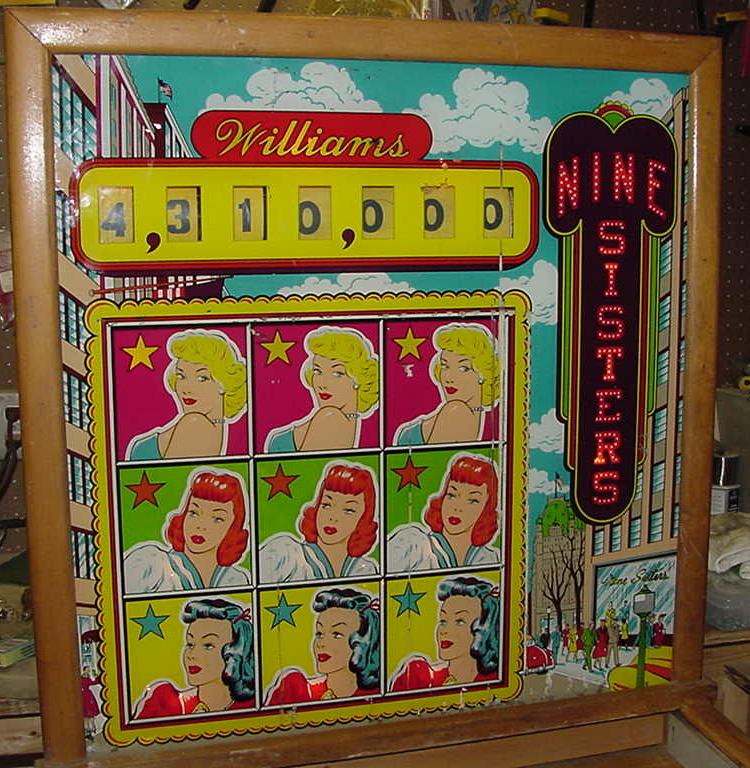
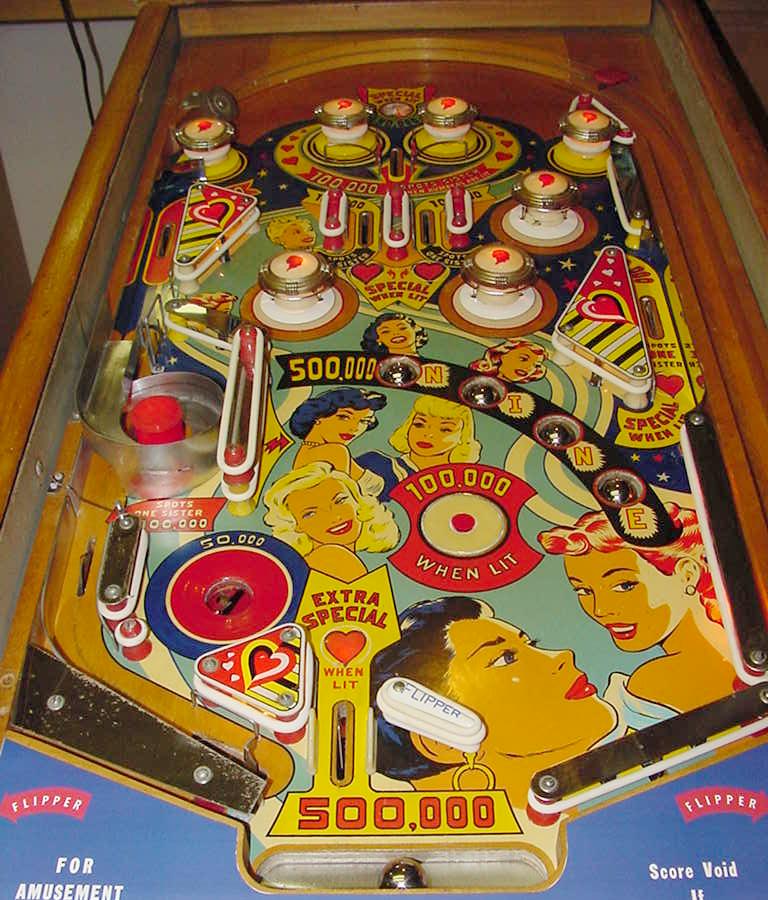
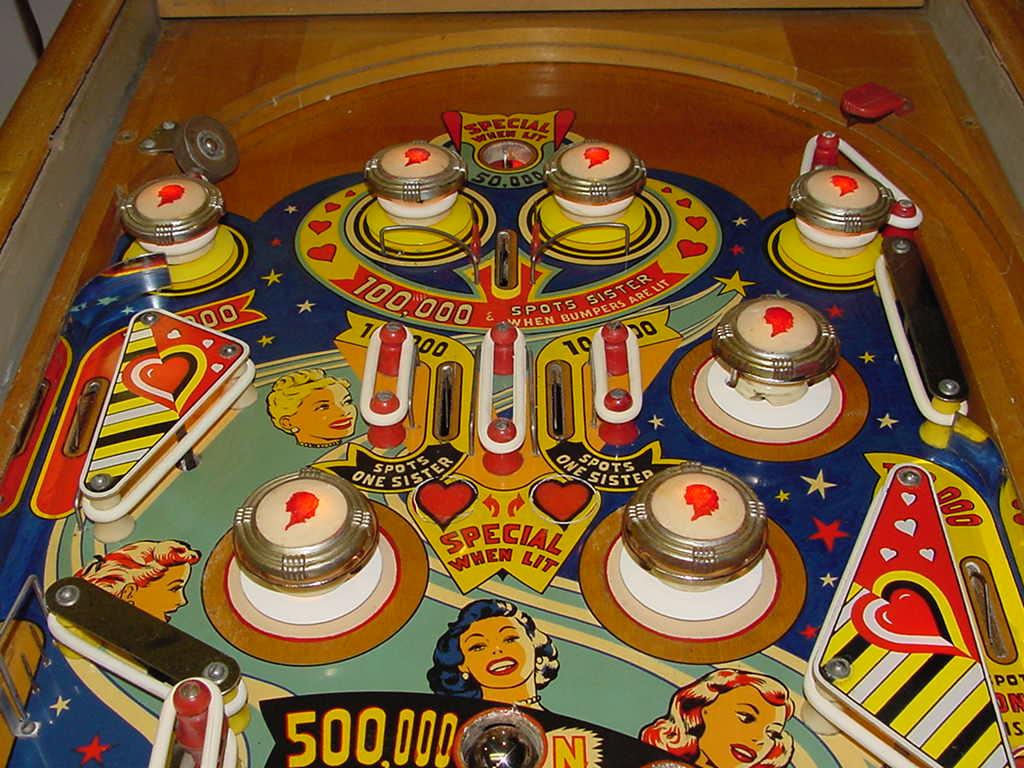
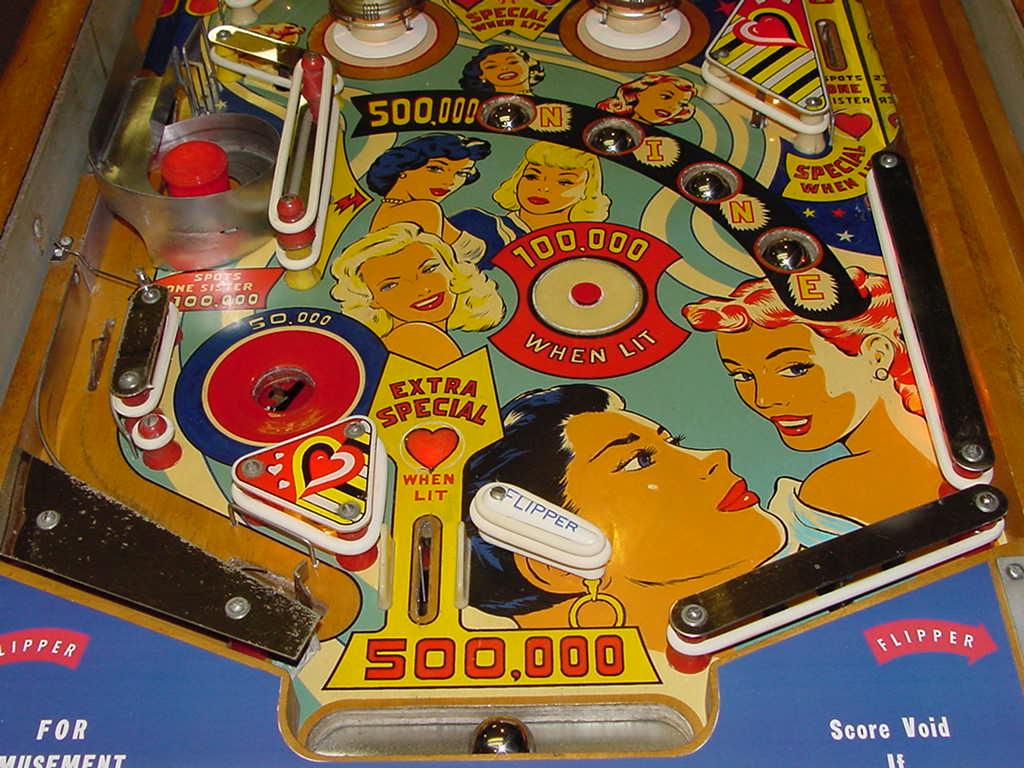
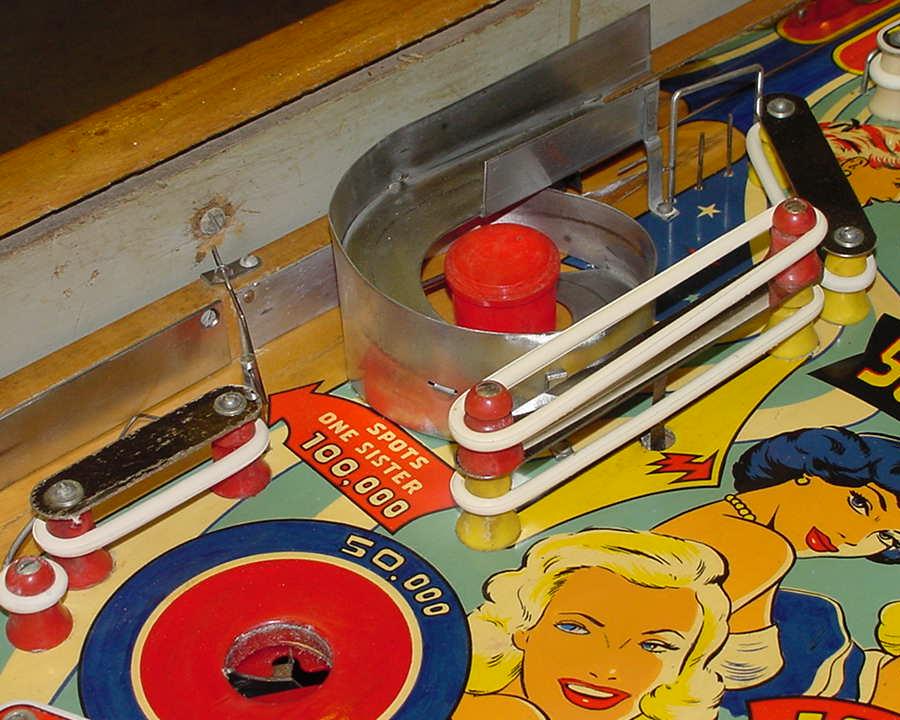
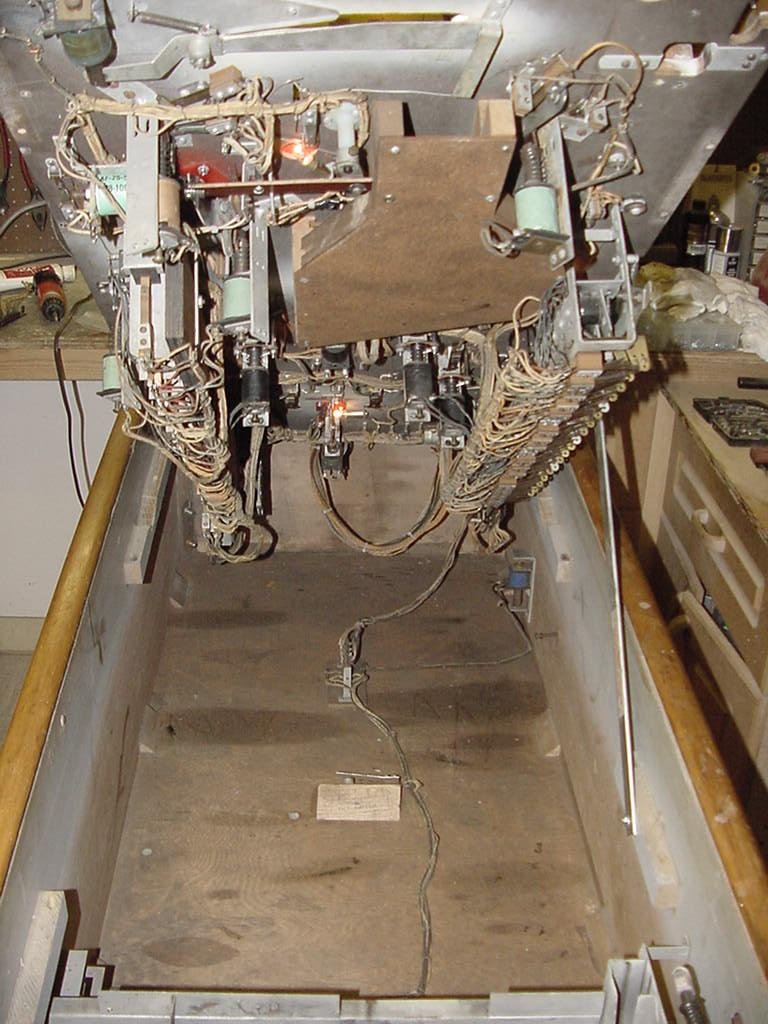
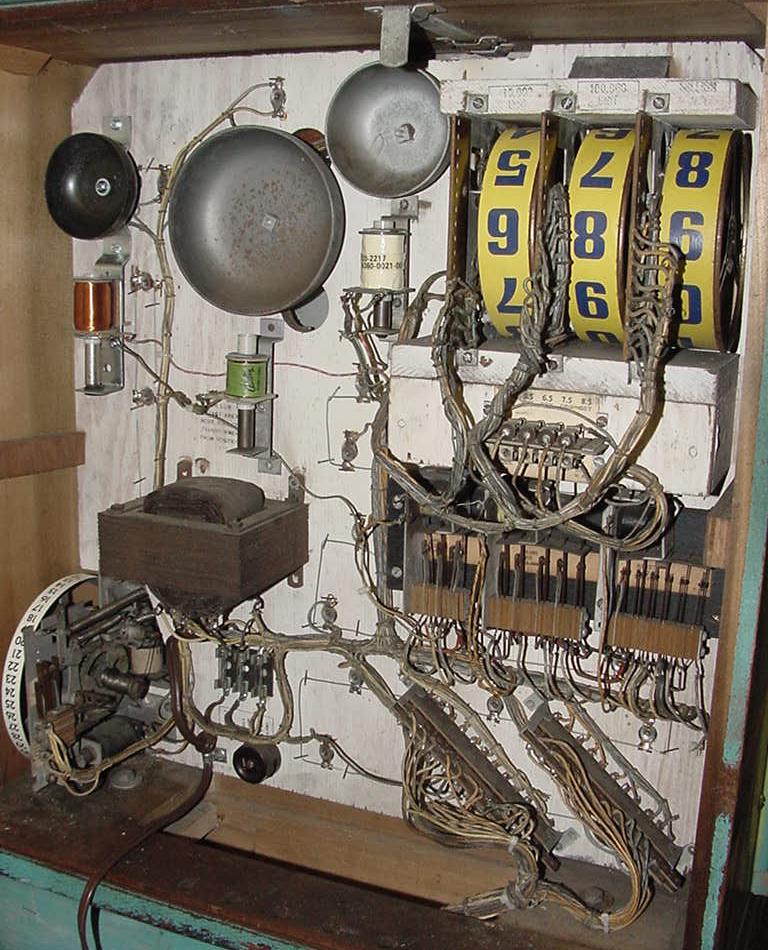
|
* Email the collector cfh@provide.net * Go to the Williams Pinball History index * Go to the Pinball Repair/History index |